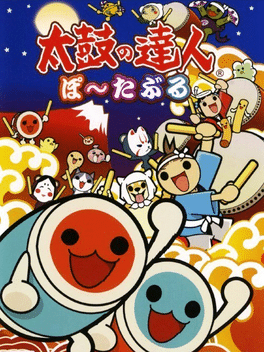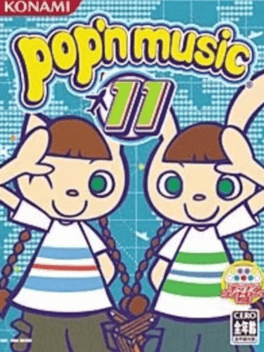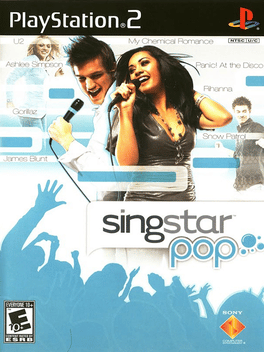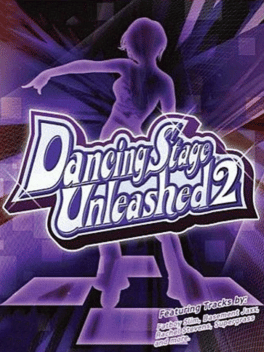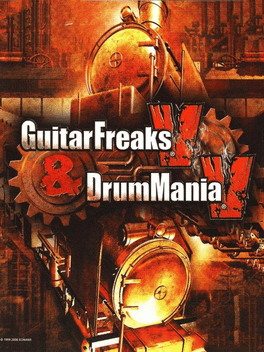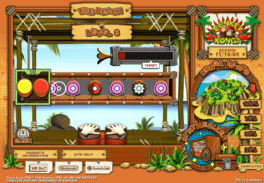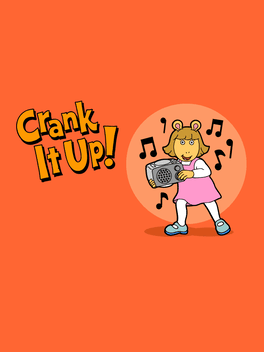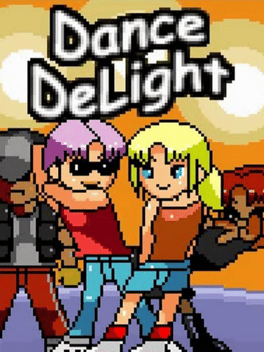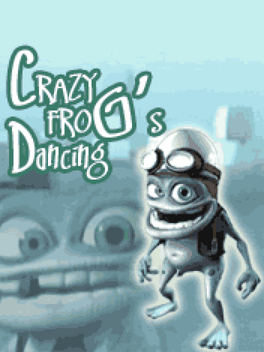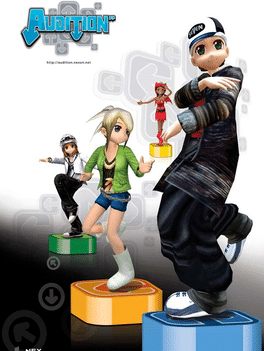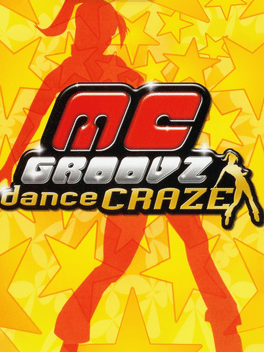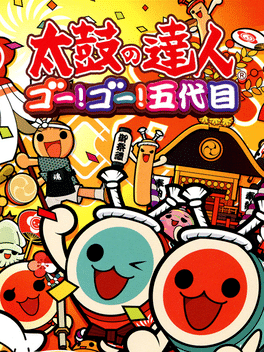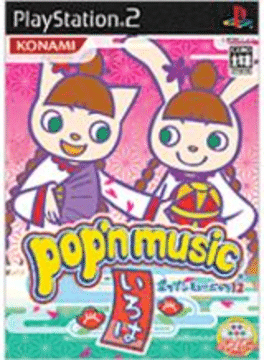New Playstation Games - Page 67
-
Osu! Tatakae! Ouendan
2005
star 8.7Osu! Tatakae! Ouendan, or simply Ouendan, is a rhythm video game developed by iNiS and published by Nintendo for the Nintendo DS handheld game console in 2005, for release only in Japan. Ouendan stars a cheer squad rhythmically cheering for various troubled people, presented in game in the style of a manga comic. In each stage, players use the DS touchscreen to tap specifically marked spots that appear in rhythm to various Japanese pop songs, scoring points for accurate timing and avoiding a poor performance which can cause the stage to end prematurely. Though never released in Western markets, it was a popular import to these regions, leading to the development of the Westernized spiritual sequel Elite Beat Agents, as well as a direct Japanese sequel Moero! Nekketsu Rhythm Damashii Osu! Tatakae! Ouendan 2. -
Pop'n Music 11
2005
-
Dance Dance Revolution Mario Mix
2005
star 7.2Boogie down with Mario in his own dance party. Players shake their things to more than 25 dance-flavored songs, from classic Nintendo themes to familiar favorites. With five difficulty levels, dancers of all abilities will be able to get into the groove. The special "Workout" feature tracks the calories burned while playing. Someone has stolen the Music Keys and released the music they held. Without the Music Keys, the unstable power of the music is wreaking havoc on the land. Mario must recover them before the chaos destroys the entire Mushroom Kingdom! The path to the keys is simple: Left, Right, Up, Down, Right, Down ...Characters include Mario, Luigi, Toad, Waluigi, Wario, Bowser. Players clear levels by performing the correct steps. Once they clear all the levels in a particular world, they'll collect a Music Key. Collect all the Music Keys to win. Players control Dance Dance Revolution: Mario Mix by stepping on different arrows on the Action Pad (included with game). Players can finally experience the thrill -
Donkey Konga 2
2005
Donkey Konga 2
2005
star 5The European port of Donkey Konga 2, which has a track listing different from the Japanese and North American versions. -
Singstar: Pop
2005
Singstar: Pop
2005
Be a Pop Superstar with SingStar Pop Featuring a chart-topping line-up of today’s best artists, songs and videos, SingStar Pop is the second release in the PlayStation2’s newest interactive singing franchise. With custom microphones in hand, singers perform along to 30 songs and videos from “Top 40” artists such as Rihanna, All American Rejects, Cyndi Lauper, Gorillaz, Snow Patrol, U2 and more, turning your living room into the pop concert of the year - 30 chart-topping songs and videos from today’s top artists. - Available as a Standalone SKU or bundled with two custom, high-quality microphones and the SingStar USB converter. - Multiple gameplay modes, including Solo, Freestyle, Pass the Mic, Battle and Duet, create a highly interactive social experience. - SingStar technology recognizes pitch, tone and rhythm to accurately score performances. - Record your favorite performances onto Memory Card for future playback. Customize and enhance playback with numerous audio effects. - Includes EyeToy USB camer -
Dancing Stage Unleashed 2
2005
Dancing Stage Unleashed 2 now features a wider range of Xbox Live modes. Via the online system, players can download new tracks, characters and challenge modes, and can also swap specially choreographed dance routines with like-minded fans. There is also an all-new 'Tournament' function wherein up to 8/16 users can participate in online 'dance-offs', with the greatest movers making it to a centrally housed Hall of Fame. Also, players can now play against dancing fans in the US, as well as their European counterparts. Dancing Stage Unleashed 2 includes more than three dozen songs, of which 14 are licensed tracks, each of which is accompanied by its relevant promo video. The tracks in the new game span a range of decades and include 'Where's your head at' by Basement Jaxx and Girls Aloud's 'Love Machine' to cater for pop fans, while the likes of the classic 'Step On' by the Happy Mondays and 'Alright' by Supergrass offer a slice of the indie scene. A couple of true dance classics are also included in the shape of Do -
Donkey Konga 2
2005
Donkey Konga 2
2005
The American port of Donkey Konga 2, which has a track listing different from the Japanese version. -
Singstar: The Dome
2005
Singstar: The Dome
2005
star 9This third installment of the SingStar series brings yet another bundle of songs to sing along. New to this game is the compatibility with EyeToy and a few rapping parts in the songs. -
Donkey Konga 3: Tabehoudai! Haru Mogitate 50 Kyoku
2005
star 7.2Donkey Konga 3: Tabe-houdai! Haru Mogitate 50 Kyoku is a music video game in the Donkey Kong series developed by Namco and published by Nintendo. Before the second installment was released in North America, Nintendo and Namco had already started plans for the third game in the series, which, unlike the first two Donkey Konga games, was eventually released only in Japan in early 2005. Donkey Konga 3 features a total of 57 track (includes the all new track), over 20 track more than the first two games. 35 of these tunes are the usual classical, pop, and game selections, but an extra 21 tunes from Nintendo Famicom games are included. It also features features all new minigames. The title of "Donkey Konga 3 JP" was given in Super Smash Bros. Brawl. -
DJMax Online
2005
DJMax Online
2005
DJMax Online is the first installment of the DJMax series, released for Windows in South Korea, Japan, and China. -
GuitarFreaks V & DrumMania V
2005
Not to be confused with the 5th game in this series, this is actually the 12th Guitar Freaks and 11th Drummania game. -
Donkey Konga
2004
-
Crank It Up!
2004
Crank It Up!
2004
Crank It Up! was a game on the Arthur page of the PBS Kids website. It was made to promote the episode "D.W. Beats All." The game was removed from the website in October 2018. -
Dance DeLight
2004
Dance DeLight
2004
Dance DeLight is a preloaded game on the Nokia 3220 and Nokia 2220 devices, running J2ME. -
Crazy Frog's Dancing
2004
Crazy Frog's Dancing
2004
Press the good button of your mobile when a number arrives in the bottom rectangle. Use 0 for the mega combo. The mega combo becomes available as soon as the gauge is full. You can then destroy all the numbers on the screen. -
Audition Online
2004
Audition Online
2004
star 5.7Audition Online, is a downloadable multiplayer online casual rhythm game produced by T3 Entertainment. It was originally released in South Korea in 2004, but it has been localized by various publishers around the world. Audition Online is free to play but it earns its revenue by selling virtual items such as clothes for the player's avatar. It is a major hit in Indonesia and Vietnam. -
MC Groovz Dance Craze
2004
star 3Produced by the long-time peripheral maker Mad Catz, MC Groovz Dance Craze puts players on the dance floor for songs from popular artists. Enjoy dancing to many of your favorite tunes by Jessica Simpson, Jewel, Kevin Lyttle, DJ Jazzy Jeff & the Fresh Prince, KC and the Sunshine Band... just to name a few. Groove out in single player modes or bring friends out for multiplayer modes including: Just Dance, Dance Together, Dance Face Off and Dance Work Out. You can practice to become a better dancer, show off your talent, compete against a friend, and even get dance-tastic exercise. Plus, you can still boogie down using the Nintendo GameCube Controller. The game is available with a bundled dance pad, or available separately. -
Taiko no Tatsujin: Go! Go! Godaime
2004
Taiko no Tatsujin: Go! Go! Godaime is the fifth installment of the Taiko no Tatsujin series for PlayStation 2. This version introduces Go-Go Mode, Yam note and Invisible modifier. -
Pop'n Music Iroha
2004
